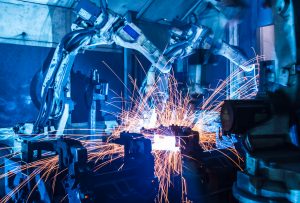I often talk about pull manufacturing and Demand-Driven Manufacturing as though they are one and the same. That’s because, in my mind, they are. However, after reading through a couple of online articles this afternoon, it’s clear not everyone sees it that way. In fact, some of the various ways pull manufacturing is described on the Internet can be a bit confusing.
In pull manufacturing, replenishment of raw materials or components is triggered by downstream demand. For example, if an order for 100 widgets is released into the system, it will pull production through the system from raw materials orders all the way through to the finished goods.
There is an important distinction made by some writers between pull and Demand-Driven manufacturing: the demand signal. For me, the order for 100 widgets is triggered by demand from an end-customer in both pull- and Demand-Driven Manufacturing. Working backwards, 100 widgets are sold at retail, which in turn creates a replenishment order for 100 widgets at the distributor, which translates into an order for 100 widgets at the manufacturer.
However, some proponents of pull manufacturing argue that the pull signal can also come from 100 widgets that will sit unsold on a shelf in the warehouse waiting for a customer order. Because production is being pulled from a demand signal downstream, it is still pull manufacturing even if it isn’t customer demand driven. This seems to me like putting a pull veneer on push thinking, and it can limit your ability to achieve your objectives because, even if you can reduce WIP inventory levels, you still run the risk of excess finished goods inventory and a lot of waste.
When I get to this point in the discussion with manufacturers who are new to Demand-Driven Manufacturing, they often ask a good question: Can I still have safety stock? For decades, we’ve been conditioned to setting safety stock levels for raw materials and key components. Doing without them can seem like performing a high-wire act without a net.
Is There a Place for Safety Stock in a Demand-Driven World?
In a perfect world, all production in Demand-Driven Manufacturing is triggered by an actual order, eliminating any excesses in raw materials, WIP inventory, or unsold finished goods. But, whoever said we live in a perfect world?
Most Demand-Driven Manufacturers will still do some level of forecasting of demand, but it’s more for long-term planning than short-term production. Buffer stocks are also a feature of Demand-Driven Manufacturing, but it’s important to understand the difference between safety stock and buffer stock. The Lean Enterprise Institute describes it this way:
“The terms buffer a nd safety stock often are used interchangeably, which creates confusion. There is an important difference between the two, which can be summarized as: Buffer stock protects your customer from you (the producer) in the event of an abrupt demand change; safety stock protects you from incapability in your upstream processes and your suppliers.”
nd safety stock often are used interchangeably, which creates confusion. There is an important difference between the two, which can be summarized as: Buffer stock protects your customer from you (the producer) in the event of an abrupt demand change; safety stock protects you from incapability in your upstream processes and your suppliers.”
In other words, safety stock is excess inventory that is designed to cover inefficiencies in your production processes. If you’ve studied Lean principles, you probably remember the rocks and water example. The rocks are the problems in your factory such as scrapped production runs, long set up times, and unplanned downtime. Inventory is the water that covers these rocks so that they don’t impact your ability to serve your customers. This excess inventory removes the urgency to make long-term improvements, which means real improvements are seldom made and inventory levels remain excessively high.
In Lean Manufacturing (and Demand-Driven Manufacturing) inventory should not be used to cover a problem. Instead the problem should be resolved. However, many Lean and Demand-Driven manufacturers will still use buffer stocks to protect their customers from variability in demand.
For some real-world case studies highlighting the benefits of pull manufacturing/Demand-Driven Manufacturing as it was meant to be, we invite you to visit our web site.




